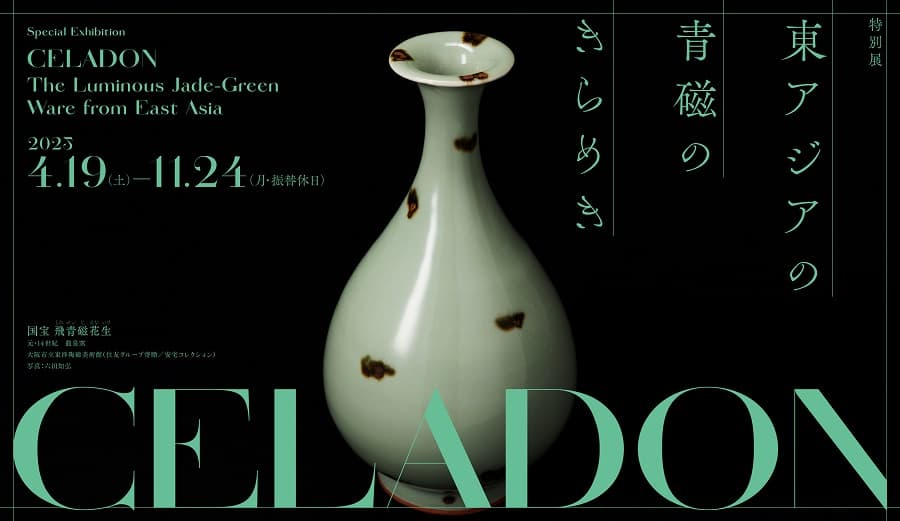2025.5.9
「CELADON―東アジアの青磁のきらめき」

Exhibition Place: Osaka Municipal Museum of Oriental Ceramics
Exhibition Period:April 19, 2025 – November 24, 2025
Exhibition Hours: 9:30~ 17:00
※Last admission is 30 minutes before closing (until 4:30 PM).
Closed:Mondays, May 7 (Wednesday), July 22 (Tuesday), September 16 (Tuesday), October 14 (Tuesday), November 4 (Tuesday)
*However, the museum will be open on the following public holidays: May 5 (Monday), July 21 (Monday), August 11 (Monday), September 15 (Monday), October 13 (Monday), November 3 (Monday), as well as April 28 (Monday) and August 12 (Tuesday).
Entrance Fee
Adults: 2,000 yen (1,800 yen for groups of 20 or more)
High School and University Students: 800 yen (700 yen for groups of 20 or more)
*The prices in parentheses indicate the group rate for 20 or more people.
*Admission is free for junior high school students and younger, holders of disability certificates (including one accompanying caregiver), and Osaka city residents aged 65 and older (proof required).
*The above fees allow access to all exhibitions in the museum.
Introduce:
Celadon is a type of porcelain that is coated with a glaze containing trace amounts of iron, and fired at high temperatures to produce a bluish-green color. With a rich and long history, celadon originated in China during the 2nd century, and over time, it spread to various parts of the world, including the Korean Peninsula and Japan. Celadon holds a significant position in the history of East Asian ceramics, and its beauty became a symbol of admiration, authority, and wealth.
The main charm of celadon lies in its beautiful glaze. The color of the glaze subtly changes depending on the firing conditions and the color of the clay, giving celadon a diverse and rich array of expressions.
In China, various expressions were used to describe the beauty of celadon. In the Tang dynasty, Lu Yu's "The Classic of Tea" praised the celadon from Yue Kiln as "like jade" and "like ice." Additionally, in the Tang poet Lu Kemon's "Secret-colored Yue Ware," it is said, "In the autumn breeze and dew, the Yue kiln opens, capturing the green hues of a thousand peaks." This poetic imagery praises the "secret-colored" celadon of Yue Kiln as if it had captured the green of the mountains and trees.
Meanwhile, celadon from the Goryeo Dynasty of Korea, due to its beauty, came to be known as "Fei color" (the color of jade) and was loved by many. In the West, celadon is popularly known as "Celadon," a term that has various origins, including one theory suggesting it is derived from the name of a character wearing celadon-colored clothing in a 17th-century French novel.
This exhibition showcases some of the finest examples of Chinese and Korean celadon from our collection, along with works from Japan and the modern era. We invite you to enjoy the allure of celadon, which continues to shine brilliantly in the history of East Asian ceramics.
Additionally, visitors will have the opportunity to view key works from our collection in the special and collection exhibitions. We also have a special exhibition in celebration of the Osaka and Kansai Expo, featuring "Osaka's Treasures – 20 Selected Works of MOCO."
Member Sign In